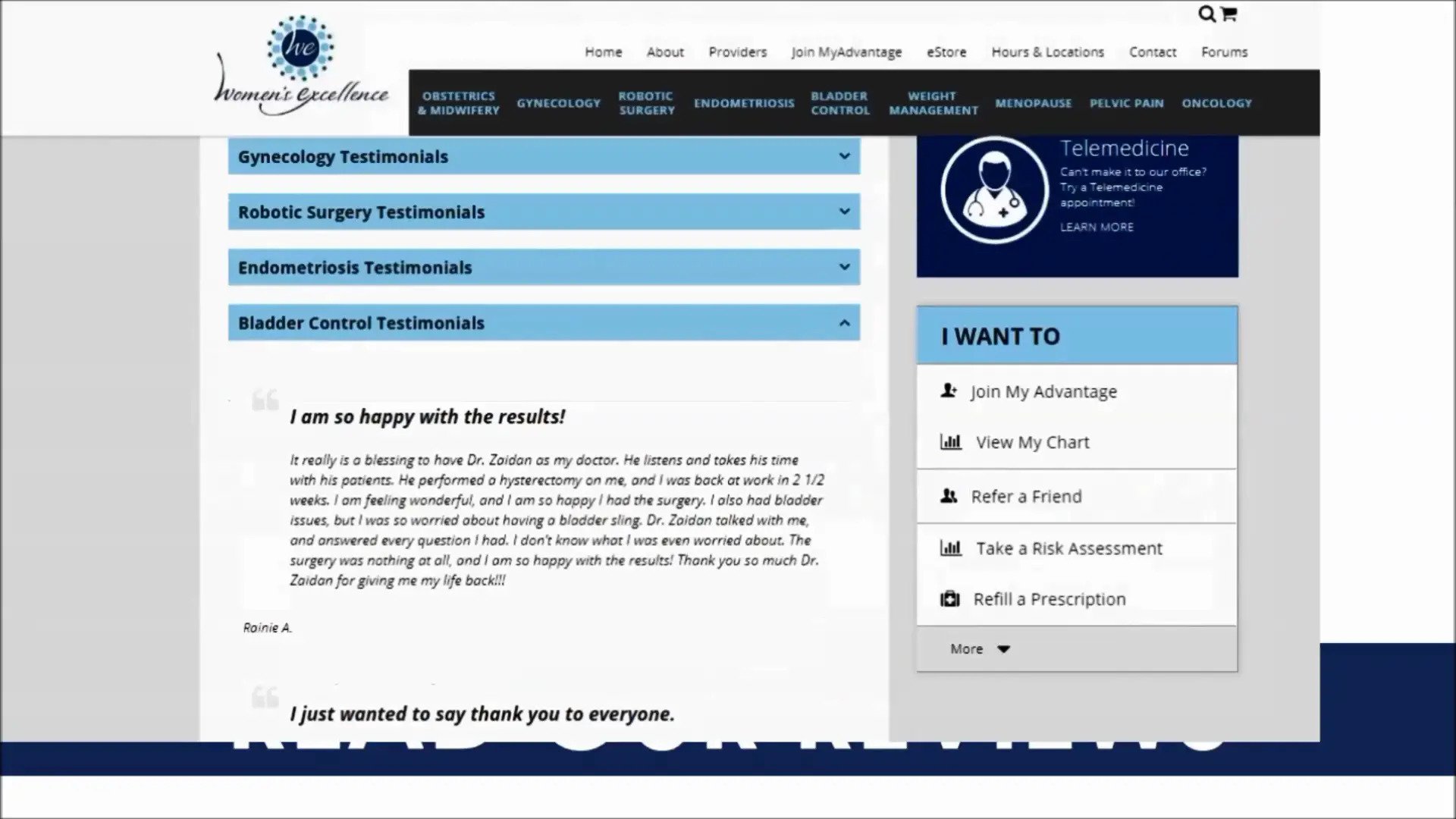Women who are expecting a baby will often come across terminology they don’t understand. Here are some common labor definitions that pregnant women should know:
ABRUPTION (placental abruption): When the placenta separates from the wall of the uterus. It can partially detach (partial abruption), or completely separate (complete abruption).
ACCELERATION: An increase in the fetal heart rate from the fetal heart rate baseline. This can occur for several reasons and most often due to fetal movement. This is a reassuring sign.
ACROCYANOSIS: The normal bluish-grayish tint to a newborn’s hands and feet that are less than 24 hours of age. This occurs primarily to allow the newborn’s blood to perfuse to the brain and vital organs at birth.
AMNIOINFUSION: Fluid infused transcervically in the presence of deep fetal variable decelerations during labor.
AMNIOTIC FLUID INDEX(AFI): The amount of fluid in pregnancy present inside of the uterus surrounding the baby. Normal at full term is 5 to 23cm.
AMNIOTOMY: To create a hole or to break the membranous bag around the baby that contains the baby and the amniotic fluid. Normal color is clear and non-odorous.
ANTENATAL PERIOD: When a woman becomes pregnant up until her labor begins. This period of pregnancy is also referred to as the antepartum period. The antenatal period ends when a woman’s labor begins. The period of labor through the birth of the infant.
APGAR: A score given to infants at one and five minutes after birth. The score is based upon the evaluation of five different criteria (color, heart rate, respiratory effort, reflex irritability, and muscle tone). Each criterion is assigned a score of 0, 1 or 2 and is based out of 10.
APPROPRIATE FOR GESTATIONAL AGE(AGA): When the birth weight according to the newborn’s gestational age is plotted on a growth curve. The results for an AGA infant will fall between the 10th to 90th percentiles.
BALLOTTMENT: This occurs when the infant’s head floats upward into the maternal pelvis when the examiner’s fingers touch the top of the head during an exam.
BETA STREPTOCOCCUS(GBS): Positive beta-hemolytic streptococcus detected in the mother during the pregnancy is treated during labor to prophylactically treat the infant in utero.
BIOPHYSICAL PROFILE (BPP): The BPP that is a test that helps determine the health and well-being of the infant performed during the third trimester. Scoring for the BPP is based upon the results of a non-stress test and an ultrasound evaluation. Reasons for doing a BPP are high-risk pregnancies, examinations, or maternal/fetal symptoms.
BISHOP’S SCORE: A score utilized to predict the success of an induction of labor. Five components are involved. These include cervical dilation, effacement, consistency, fetal position, and station.
BLOODY SHOW: The cervix is full of small capillaries that break open when the cervix shortens and/or dilates. The amount is typically minimal and causes a small amount of spotting in your underwear or when you wipe after using the bathroom. If more than one to two teaspoons noticed, you should contact your provider. This can occur weeks before labor begins or with labor. This bloody show can also occur following intercourse. Concern is present if this occurs prior to 37 weeks gestation.
BRAXTON HICKS: False labor. The irregular, intermittent tightening of the uterine muscle that does not dilate or efface the cervix.
BREECH: When the infant is positioned in the uterus with either the feet or the buttocks instead of the head first in the maternal pelvis. Many infants are breech up until approximately 34 weeks gestation.
CAPUT SUCCEDANEUM (Caput): Temporary swelling/edema on the infant’s scalp in the area of the presenting part resulting from labor. Typically is gone within the first 24 to 48 hours after birth.
CARDINAL MOVEMENTS OF LABOR: The movements the infant experiences through labor and birth as it journeys through the birth canal. They consist of descent, flexion, internal rotation, extension, external rotation and expulsion (birth).
CEPHALHEMATOMA: When blood accumulates between the skull bone and the periosteum of the newborn that occurs during labor or birth from trauma or pressure to the area. Cephalhematoma does not cross suture lines.
CEPHALIC PRESENTATION: The head of the infant set lowest in the birth canal. Other positions presenting may be breech (buttocks or feet), or transverse (shoulder).
CERVICAL DILATION: The part during labor that dilates or opens that allows the woman to begin pushing in labor. This is called the cervical Os and is measured from zero to 10 centimeters. Ten centimeters dilated is referred to as being “complete”.
CERVICAL EFFACEMENT: The neck of the cervix that thins or shortens when a woman is in labor. This is measured by percentages of 0 to 100 percent.
CERVICAL LIP: When there is no longer the cervix felt around the fetal head except for an area left anteriorly, posteriorly, or laterally.
CERVICAL RIPENING: The process of assisting the cervix of a full-term pregnancy in softening for purposes of induction.
CIRCUMCISION: A procedure that entails removing the foreskin from the penis of a newborn.
COLOSTRUM: The first liquid present in the breasts prior to breastmilk. Colostrum can be expressed or found leaking from the breast commonly during the third trimester of pregnancy. It is high in protein and maternal antibodies and low in fat.
COMPLETE BREECH: The baby’s buttocks are presenting at the cervix, but the legs are folded “Indian style,” making vaginal delivery difficult or impossible.
CORD PROLAPSE: The fetal umbilical cord slips into the vaginal canal in front of the presenting part of the infant. This situation is an emergency and requires an immediate cesarean section as it can stop blood and oxygen supply to the infant.
CROWNING: When the baby’s head has passed through the birth canal and the top or “crown” stays visible at the vaginal opening.
CYTOTEC (Misoprostol): Medication used for induction purposes to soften the cervix. This medication is FDA approved for treatment of stomach ulcers.
DECELERATION: Refers to fetal heart rate changes from the heart rate baseline. Decelerations may be early, late, variable or prolonged depending on the circumstances in which they occur.
DOPPLER DEVICE: An ultrasound monitor that detects the fetal heart rate and allows it to be heard. A doppler can be used for intermittent monitoring.
DOULA: An individual that is hired to provide emotional support to a woman and her partner from the antenatal period, through birth and the postpartum.
DYSFUNCTIONAL LABOR: Occurs when there are non-functioning contractions that obstruct the progress of labor.
DYSTOCIA: When a woman’s labor progress is interrupted or is unable to progress. This may occur due to the size, position of the baby, the shape of the passageway, the limited strength of the power due to various reasons, or the psyche of the mother-fear of pain, anxiety, history of abuse, the environment, etc.
ECLAMPSIA: A condition that develops in pregnancy that is associated with an elevated blood pressure, proteinuria, elevated liver enzymes, and seizures. This can also lead to coma. This begins as pre-eclampsia.
ENGAGED: The baby’s presenting part has settled into the pelvic cavity, which usually happens during the last month of pregnancy.
ENGORGEMENT: A feeling of fullness in the breasts due to the production of breast milk. Occurs within the first two to three days of giving birth.
EPIDURAL: A common method of anesthesia used during labor. It is inserted through a catheter, which is threaded through a needle, into the dura space near the spinal cord.
EPISIOTOMY: An incision made to the perineum to widen the vaginal opening for delivery.
FLOATING: When the fetal presenting part is not engaged; sits above the maternal pelvis.
FONTANELLE: Soft spots between the unfused sections of the baby’s skull. These allow the baby’s head to compress slightly during passage through the birth canal.
FRANK BREECH: The baby’s buttocks are presenting at the cervix and the baby’s legs are extended straight up to the baby’s head.
INCONTINENCE: Inability to control bodily excretions. Urinary incontinence can occur as the baby places heavy pressure on the bladder.
INDUCED LABOR: Labor is started or accelerated through intervention, such as placing prostaglandin gel on the cervix, using an IV drip of the hormone oxytocin (Pitocin), or by rupturing the membranes.
INTRAPARTUM PERIOD: The time period from the start of labor through the birth of the infant and placenta.
INVOLUTION: Refers to the progressive decrease in the size of the uterus after giving birth.
JAUNDICE: Condition in newborn babies that’s reflected in yellowing of the skin. It is caused by the immature liver’s inability to process excess red blood cells.
LABOR: Regular contractions of the uterus that result in dilation and effacement of the cervix.
LANUGO: Fine, downy hair that develops on the fetus from the 17th week of gestation and remains on the newborn at birth.
LEOPOLD MANEUVERS: Hand maneuvers used on four distinct areas of the external maternal abdomen to determine the position and presentation of the fetus.
LIGHTENING: When the baby drops in preparation for delivery (engagement).
LOCHIA: Discharge from the vagina following birth through four to six weeks postpartum that consists of blood, mucus, and tissue from the uterus. It begins as red (rubra), progresses to pink (serosa) and finally to a white (alba) discharge.
LOW BIRTH WEIGHT (LBW): A newborn birth weight of 1500 to 2500 grams (3lb 5oz to 5lb 8oz).
Very Low Birth Weight (VLBW): An infant weighing 500 to 1499 grams (1lb 1oz to 3lb 5oz).
MACROSOMIA: A newborn’s term birth weight that is over 4000 grams.
MASTITIS: A plugged milk duct of the breast.
MECONIUM: This is a dark green or black, sticky stool that is found in the large intestine of a growing fetus and is normally passed shortly after birth.
MOLDING: The overlap of the skull bones of the newborn from the accommodation of the head through the maternal pelvis that occurs during labor and birth.
NEONATAL PERIOD: The first 28 days of a newborn’s life.
NICU: Acronym standing for Neonatal Intensive Care Unit.
NON-STRESS TEST (NST): External fetal monitoring is done to assist with the evaluation of fetal well-being. Fetal heart rate accelerations in response to fetal movement are the focus.
NUBAIN: Synthetic narcotic pain reliever commonly used in labor and delivery.
NUCHAL CORD: The presence of the fetal umbilical cord one or more times around the neck.
OLIGOHYDRAMINIOS: Amniotic fluid that is below the level of normal.
OXYTOCIN: Hormone secreted by the pituitary gland that stimulates contractions and the milk-ejection reflex. Pitocin is the synthetic form of this hormone.
PERINATAL PERIOD: The time of 20 weeks gestation through 28 days after birth.
PERINEUM: The muscle and tissue between the vagina and the rectum.
PLACENTA: The tissue that connects the mother and fetus to transport nourishment and take away waste.
PLACENTA PREVIA: When the placenta partially or completely covers the cervix.
POLYHYDRAMNIOS: Amniotic fluid that is above the level of normal.
POSTERIOR PRESENTATION: The baby is in a face-up position during delivery. Normal presentation is anterior, which is face-down.
POSTPARTUM PERIOD: The period after childbirth.
POSTPARTUM DEPRESSION (PPD): Depression more serious than the baby-blues of a new mother. PPD lasts longer than the first two weeks and sometimes may present anytime within the first year of motherhood. Learn more.
POSTPARTUM PERIOD: The first six weeks after a mother gives birth. It is expected that at this time the woman’s body has returned to her pre-pregnancy state.
POST-TERM PREGNANCY: Pregnancy lasting more than 42 weeks.
PRETERM BIRTH: Newborns born earlier than 37 weeks gestation.
PROLONGED LABOR: This is commonly referred to the latent phase and is described as the absence of spontaneous delivery occurring after 24 hours of labor.
QUICKENING: The maternal feeling of fetal movement. This typically occurs around 16 to 20 weeks gestation.
RUPTURED MEMBRANES (ROM): Refers to the spontaneous rupture/breaking of the fluid-filled sac surrounding the baby. The fluid may come as a gush of water or as a slow leak. Slow leaks are sometimes mistaken as incontinence. If the rupture is caused by the provider/examiner, it is then referred to as artificial rupture of membranes (AROM). Also, see Amniotomy.
SMALL FOR GESTATIONAL AGE (SGA): This occurs when the newborn birth weight in correlation to gestational age is less than the 10th percentile expected for that gestation.
SPECULUM: An instrument used to open the vagina slightly wider so that the cervix can be seen more easily.
STRIAE GRAVIDARUM: The blue to pink maternal streaks on the skin as stretching occurs during pregnancy.
TIMING OF UTERINE CONTRACTIONS: Contractions are measured from the beginning of one contraction until the beginning of the next contraction.
TRANSVERSE PRESENTATION: Baby’s body length is horizontal in the uterus. If the baby cannot be moved, a cesarean delivery is required.
TRUE LABOR: Uterine contractions that are longer in duration, stronger over time, and become regular in timing. This is accompanied with cervical dilation and effacement.
UMBILICAL CORD: The cord that transports blood, oxygen, and nutrients to the baby from the placenta. The maternal-to-fetal lifeline from the placenta.
VERNIX: A protective covering on the newborn skin from the drying effect of the amniotic fluid.
While these labor definitions might seem confusing, our practitioners can help to explain them to you. Contact us or use our chat today to make your first appointment.







